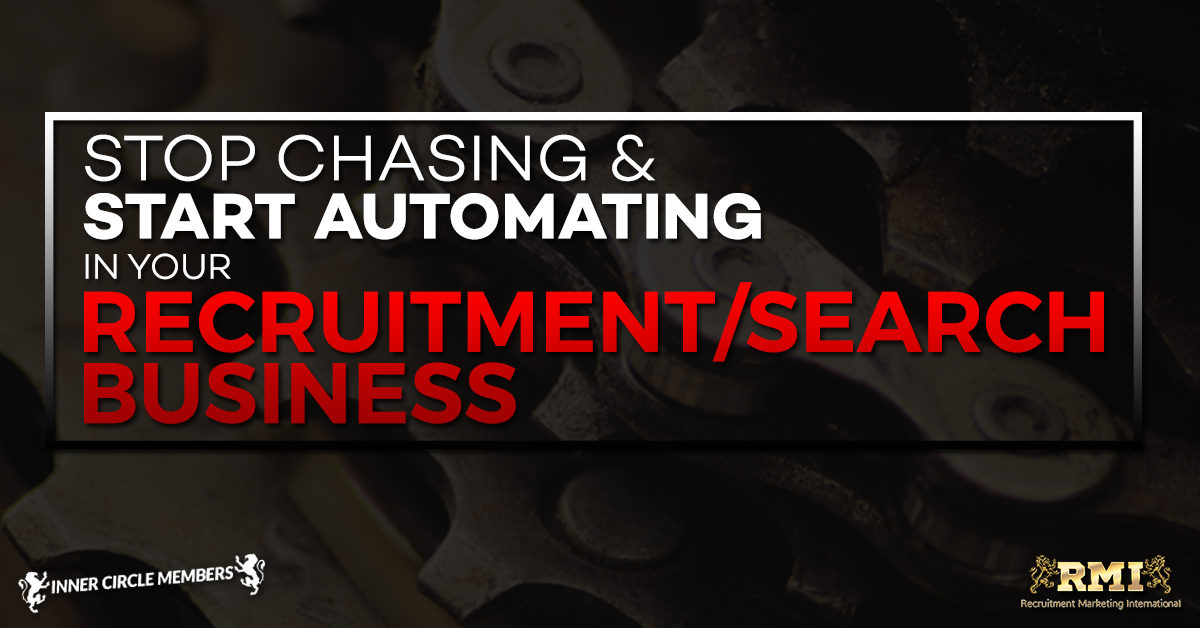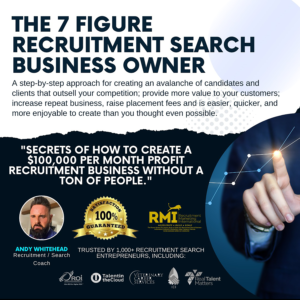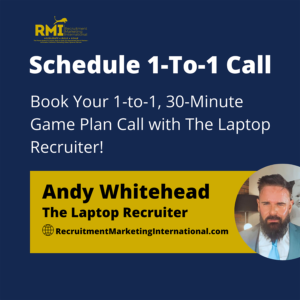
You’ve probably testing different tools and background with your clients in your Recruitment/Search Business. As you start to use these different strategies, automation must take place.
In seeking clients and candidates, you send out a message, and it goes to the candidates, goes to the clients that goes once. Followups are made on the phone but it’s not scalable, it’s not traceable, it’s rarely measurable to any great degree.
Let’s Identify the common problems in your Recruitment/Search Business
- You’recontacting candidates and clients once, and that isn’t the way we want to work it.
- You send out an manual email to candidates, to clients, or yousend a manual document, or do something, but if it’s even picking up the phone and there’s no systematization to it you’re still doing the manual thing.
- You do followups that are not personal. You should have gone to your competitors website, you should now be signed up to them, and see how they communicate with their clients, with their candidates.
- Followup is messy, and it’s really hard to organizewhich makes it difficult to scale. You want to be removed from the process, and let systems, and let tools do these things.
- When youapproach candidates, you do approach clients. You send out emails, or you make your X amount of phone calls you’ve been told to make that day, but you’re not certain who’s hot and who’s not. Who’s actually interested in, and who’s not.
The Action Plans you should perform in your Recruitment/Search Business
- Move from being manual to automated.When someone comes to you, you need an automated followup process.
- Move from manual to automated outbound campaigns. You can simply copy and paste the campaign, and the whole process is automated. Just change a few of the keywords.
- Followup automatically with those who are interested.Clients and Candidates come to a page on your website and get ABC leads.
The Top 5 Principles That Are The Foundations Of Automated Reply Campaigns
- Think smarter, not harder.Now there are tools at hand whereby we can start to make these things happen. Let the systems do the hard work.
- Build your Database. If you’ve got a database of clients, or you’ve got a database of candidates now, it’s It might be that you need to grow it.By that, how many potential clients are there, how many potential decision makers in each client? If there’s 50 clients, there’s 50 decision makers. If there’s a total of 5,000 potential candidates in that marketplace, you know what your marketplace looks like. You know you’ve got 5,000, and that’s our database. You need to have the clients and the candidates in your database to make these tools work.
- Clean your Database. You need to make sure that from an engagement perspective you’ve got the correct names, correct email addresses, you aren’t going to get bounces in going to impact yourservers to make sure when you start to use these you’ve got a good solid grounding.
- Personalize your Data. You need to know what the individuals name is. We need the correct first name.
- Create a Mind Map. Thisbrings together all the different strategies or training, and making it into something that’s really visual.
Clear Sky Steps in Starting to Automate your Recruitment/Search Business
- Know your Market Size. You don’t need every single client, but if you can influence every client in the marketplace, or as many as possible, it’s You need to know your market size and grow out database. Growing your database is simple. You need traffic and conversion.
- Upload your Clients & Candidates into separate lists. You might break it down so you’ve got a list of clients, of a certain type of client, and you’ve got obviously certain types of candidates.
- Inspect the Campaigns
- Create the Messages. The actual email you’re going to send to the candidate or to the client.
- Setup the Automation.
If you’re really digging deep, and want to see how you can apply these in your business, let’s jump on a 15-minute call. Really quick discovery call. Then what we’re going to do is we’re going to cover where you are now, look at what can be applied in your business, have a conversation about your niche, see what opportunities exist in your niche, understand who your ideal client is, who your ideal candidate is, and what you’re really working towards in terms of metrics.




